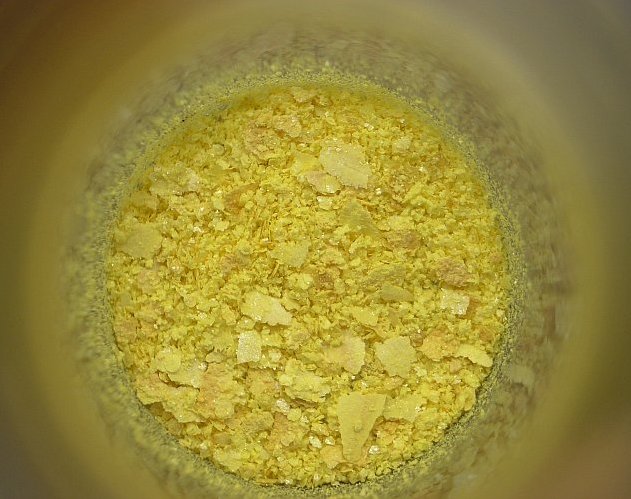


Quote: Originally posted by mewrox99  |



 . I exposed
myself to a LITTLE bromine (just smelling it) the first time I made it. Then I started thinking about every breath I took and tried to breath in very
deeply. Then you will get the impression you can't breath properly
. I exposed
myself to a LITTLE bromine (just smelling it) the first time I made it. Then I started thinking about every breath I took and tried to breath in very
deeply. Then you will get the impression you can't breath properly  Quite funny,
as other one other time I overexposed myself to bromine (this was my only overexposure to an acute poison in my almost 5 years of home chemistry, when
I didn't have a fume hood). This happened when I was making it outside, and my sense of smell was lost, and there was slight irritation all the time
(for IIRC 30-45 minutes). So I would guess this was an exposure level of about 5ppm. Left me with a light pain in the chest for the evening wich
dissappeared after sleeping.
Quite funny,
as other one other time I overexposed myself to bromine (this was my only overexposure to an acute poison in my almost 5 years of home chemistry, when
I didn't have a fume hood). This happened when I was making it outside, and my sense of smell was lost, and there was slight irritation all the time
(for IIRC 30-45 minutes). So I would guess this was an exposure level of about 5ppm. Left me with a light pain in the chest for the evening wich
dissappeared after sleeping.
Quote: Originally posted by mewrox99  |

 ) around my mouth. Maybe overkill, but this
gas is so lethal that I can't take risks.
) around my mouth. Maybe overkill, but this
gas is so lethal that I can't take risks.
Quote: Originally posted by mewrox99  |

Quote: Originally posted by mewrox99  |
Quote: Originally posted by mewrox99  |
Quote: Originally posted by Dr.Bob  |
 I think he suffers from the survivor paradox symptom
I think he suffers from the survivor paradox symptom 



 fficial&prmd=ivns
fficial&prmd=ivns will convert at some point although they are pretty typical images***
will convert at some point although they are pretty typical images***  now as For the efficient use of KI, if the peroxide used
oxidizes all of the elemental iodine out of solution, would there really be that much waste of KI? I haven't had a chance to view OP's method yet but
I'm assuming that the hypochlorite performs the same oxidation as the peroxide does? Perhaps I will do a side by side test later and see what the
differences look like!
now as For the efficient use of KI, if the peroxide used
oxidizes all of the elemental iodine out of solution, would there really be that much waste of KI? I haven't had a chance to view OP's method yet but
I'm assuming that the hypochlorite performs the same oxidation as the peroxide does? Perhaps I will do a side by side test later and see what the
differences look like!Quote: Originally posted by woelen  |

 . I'll update my video...
. I'll update my video...